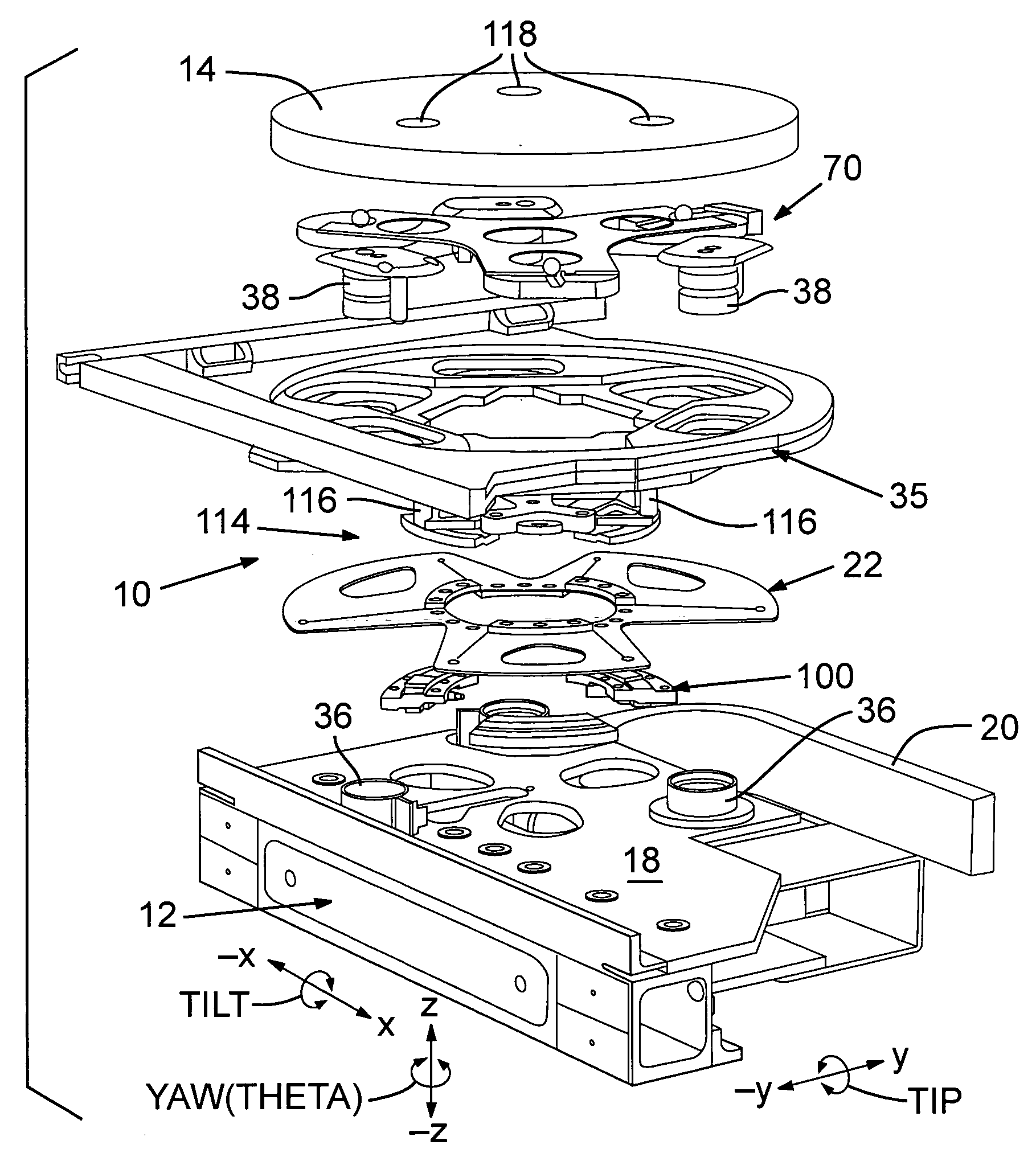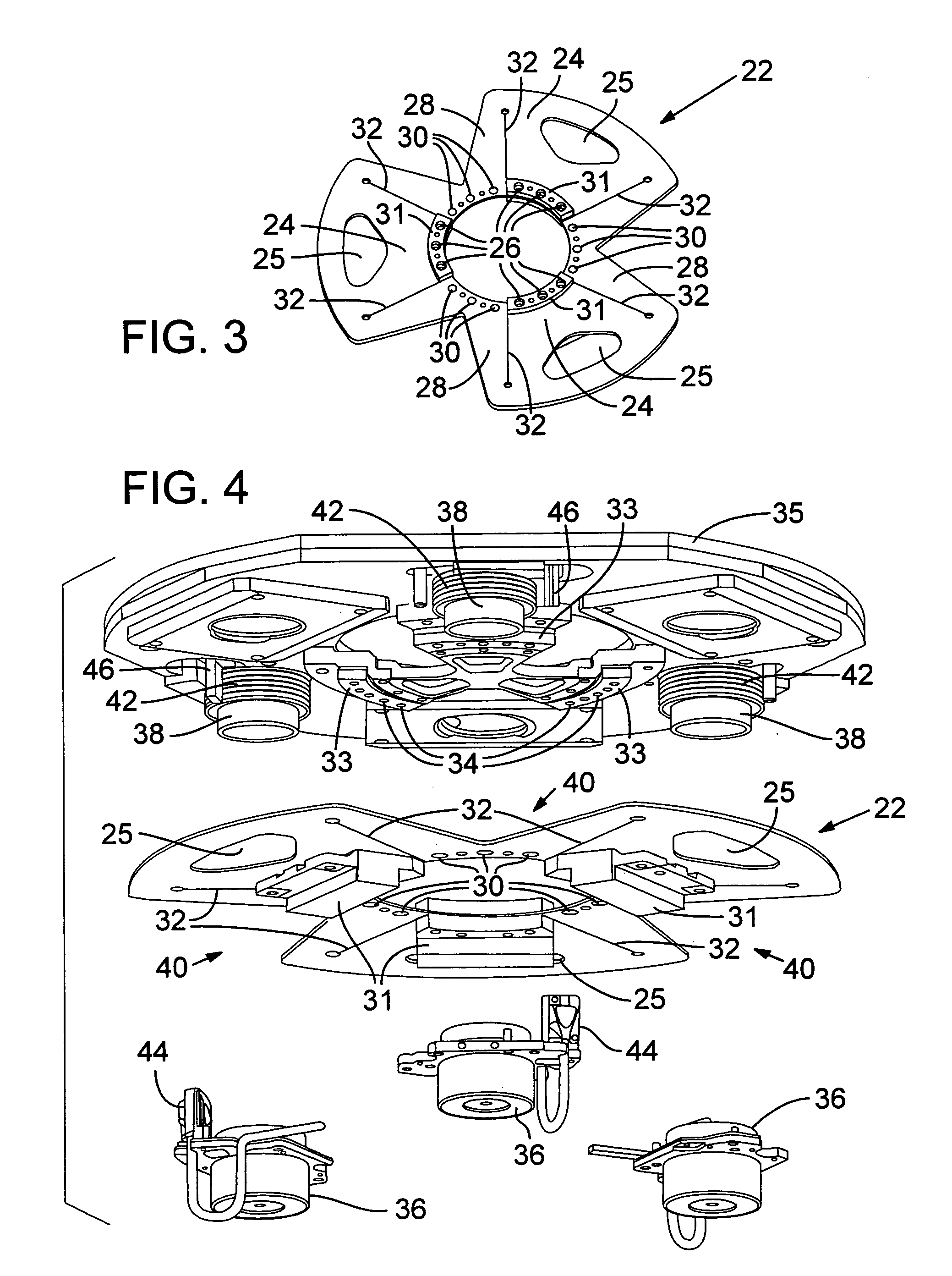High resolution, dynamic positioning mechanism for specimen inspection and processing
a dynamic positioning and specimen technology, applied in the direction of motor/generator/converter stopper, dynamo-electric converter control, printer, etc., can solve the problems of increasing the risk of particulate contamination, complicated design of inspection/processing elements, and insufficient dynamic performance for many high-throughput applications, etc., to achieve high damping, avoid vibration, and reduce the effect of mass
- Summary
- Abstract
- Description
- Claims
- Application Information
AI Technical Summary
Benefits of technology
Problems solved by technology
Method used
Image
Examples
Embodiment Construction
[0030]FIGS. 1 and 2 show respective side elevation and exploded views of a preferred embodiment of a ZTT-Theta positioner 10, which is assembled between the top of an X-Y stage 12 and the bottom of a wafer mounting chuck 14. X-Y stage 12 moves in X- and Y-axis directions relative to a flat surface 16, such as a granite slab. ZTT-Theta positioner 10 is mounted to an upper surface 18 of X-Y stage 12 and acts to accurately move chuck 14 in the Z-axis direction, tip (roll) chuck 14 about the X-axis, tilt (pitch) chuck 14 about the Y-axis, and rotate (yaw) chuck 14 about the Z-axis. Accordingly, chuck 14 undergoes six-axes of controlled movement in the X, Y, Z, roll, pitch, and yaw directions.
[0031] ZTT-Theta positioner 10 is a low-profile assembly occupying only about 35 mm of the total 115 mm height of X-Y stage 12, positioner 10, and chuck 14. X-Y stage 12 is electrically connected to a controller (not shown) by a flexible cable 20. The low-profile reduces angular torque by keeping t...
PUM
| Property | Measurement | Unit |
|---|---|---|
| height | aaaaa | aaaaa |
| height | aaaaa | aaaaa |
| distances | aaaaa | aaaaa |
Abstract
Description
Claims
Application Information
 Login to View More
Login to View More - R&D
- Intellectual Property
- Life Sciences
- Materials
- Tech Scout
- Unparalleled Data Quality
- Higher Quality Content
- 60% Fewer Hallucinations
Browse by: Latest US Patents, China's latest patents, Technical Efficacy Thesaurus, Application Domain, Technology Topic, Popular Technical Reports.
© 2025 PatSnap. All rights reserved.Legal|Privacy policy|Modern Slavery Act Transparency Statement|Sitemap|About US| Contact US: help@patsnap.com



